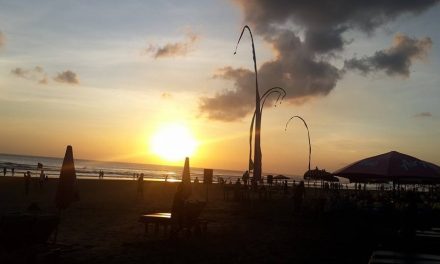Nestled on the picturesque island of Bali, Kuta is famous for its stunning beaches and vibrant nightlife. However, beyond the bustling tourism, there lies an incredible network of wildlife conservation activities that often go unnoticed. As someone who has experienced these initiatives firsthand, I can’t help but feel that they play a crucial role in preserving not only the environment but also the local culture and community dynamics. So, grab your sun hat, and let’s dive into the world of Kuta’s wildlife conservation!
The Magical World of Marine Conservation
When I first arrived in Kuta, I was captivated by the crystal-clear waters and vibrant marine life. Diving into the ocean for the first time, I was greeted with a kaleidoscope of colors, from the clownfish hiding among the anemones to the majestic sea turtles gliding effortlessly through the water. Unfortunately, this beauty often encounters threats from pollution, overfishing, and climate change.
At a local marine conservation center, I had the eye-opening experience of joining a beach cleanup. Picture this: armed with a bucket and a hearty group of eco-warriors, we waded through the warm sand collecting plastics and trash that had washed ashore. It was hard work, and our hands were soon sore, but the sense of camaraderie and purpose made each piece of litter feel like a small victory for the ocean. Plus, we learned about the local turtle nesting habits from passionate marine biologists, who emphasized the importance of keeping their environment clean for future generations of these incredible creatures.
Practical Advice: How You Can Help
Engaging in marine conservation activities, whether during your vacation or in your everyday life, can be incredibly fulfilling. Here’s how you can contribute:
1. Join a Beach Cleanup: Look for organizations that host regular cleanups. Bring friends along for a fun, team-building day out!
2. Participate in Workshops: Many conservation centers, like the one I visited, offer educational workshops. Embrace the opportunity to learn about marine biodiversity.
Protecting Land Animals: The Forests and Beyond
While Kuta’s beaches often steal the show, Balinese jungles and hills are home to countless species of wildlife that deserve our attention, too. On a hiking trip to Ubud, just a short ride from Kuta, I had the chance to experience a sanctuary dedicated to protecting rescued animals. It was here that I learned about the importance of preserving natural habitats for Bali’s unique wildlife.
One memorable moment was when a playful orangutan reached out and gently grabbed my wrist. The caretaker explained how these incredible creatures are often victims of the illegal pet trade and habitat destruction. Witnessing this bond in real-time sent my heart racing! Investing in local sanctuaries through visits, donations, or even volunteering can create a significant impact on these animals’ lives.
Practical Advice: Supporting Wildlife Sanctuaries
If you want to support land-based wildlife conservation in the area, consider these practical steps:
1. Visit Ethical Wildlife Sanctuaries: Opt for sanctuaries that prioritize animal welfare and education. Make sure they promote conservation rather than entertainment.
2. Spread the Word: Share your experiences on social media to raise awareness about the importance of wildlife conservation!
Community Involvement: The Heartbeat of Conservation
What truly amazed me during my time in Kuta was how interconnected wildlife conservation activities are with the local community. By engaging local communities in conservation efforts, we can ensure a sustainable future for both wildlife and people.
I will never forget visiting a village where the locals had created a program to raise awareness about the threats faced by their native species, such as the endangered Bali starling. The villagers hosted events and educational sessions for tourists and locals alike, creating a genuine bond as we all came together to admire and appreciate Bali’s rich wildlife heritage. Learning from the community provided me with unique insights I would have never obtained as a tourist alone.
Practical Advice: Engage with the Local Community
You don’t have to be a conservationist to support local efforts. Here are some ways to get involved:
1. Attend Community Events: Participate in workshops or festivals that celebrate local wildlife and environmental conservation.
2. Shop Local: Support local artisans and businesses, as their success often translates into better practices for the environment.
Conclusion
Kuta is not just a paradise of sun-soaked beaches and lively nightlife—it’s a hub for wildlife conservation that warrants our attention and support. Whether you clean up a beach, visit a sanctuary, or engage with local communities, every little action contributes to the greater good.My time experiencing Kuta’s wildlife conservation activities changed my perspective on travel. It’s no longer just about leisure; it’s about engagement, responsibility, and heartfelt experiences. So, on your next journey to Bali, consider incorporating these conservation activities into your itinerary. You’ll return home not only with beautiful memories but also with a greater sense of purpose and connection to our planet. Happy travels!






